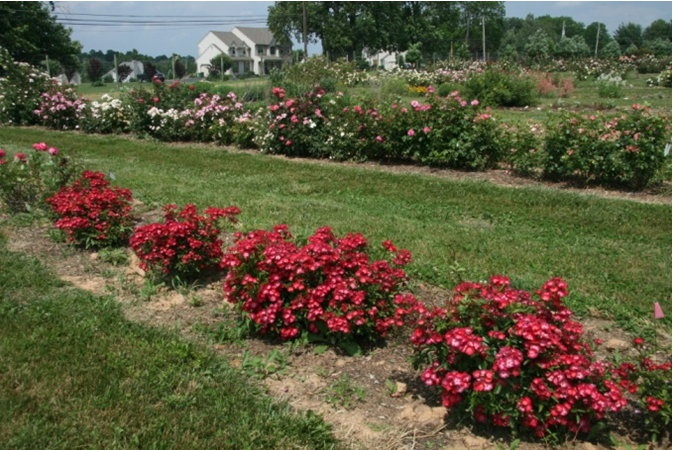|
|
'Harpballred' rose Description

Photo courtesy of Harris, Peter G.
Bloom:
Red, white center. None / no fragrance. 5 petals. Average diameter 1.25". Small, single (4-8 petals), in large clusters, cupped bloom form. Prolific, blooms in flushes throughout the season. Ovoid buds.
Habit:
Short, mounded. Glossy, dark green foliage. 3 to 7 leaflets.
Height: 2' (60cm). Width: 30" to 3' (75 to 90cm).
Growing:
USDA zone 5b and warmer. Can be used for landscape.
Patents:
United States - Patent No: PP 24,437 on 13 May 2014 VIEW USPTO PATENTApplication No: 13/573,302 on 10 Sep 2012 Inventors: Harris; Peter G. (Charleston, WV)
The new variety of Rosa hybrida landscape shrub rose plant of the present invention was created at Charleston, W. Va., U.S.A., by open pollination in a rose garden setting at my home in the hope that desired characteristics would be displayed in the progeny. The female parent (i.e., the seed parent) was the ‘Ballerina’ variety (non-patented in the United States). The male parent (i.e., the pollen parent) is unknown. The pollen may have been derived from the ‘Ballerina’ variety.....The seeds resulting from the above pollination were sown during 1997 and small plants were obtained which were physically and biologically different from each other. Selective study resulted in the identification during 1998 of a single plant of the new variety.
Notes:
Look-A-Likes™ Hydrangealicious is a unique new rose with densely flowered clusters of small red blooms with a white eye. The habit is also quite nice since it remains low to the ground, requiring little maintenance. This is not your typical rose. Its first flush of blooms is stunning, but it does not repeat bloom well. Plant it towards the front of mixed borders where other flowering perennials will cover it later in the season. (from the Conard-Pyle website)
|